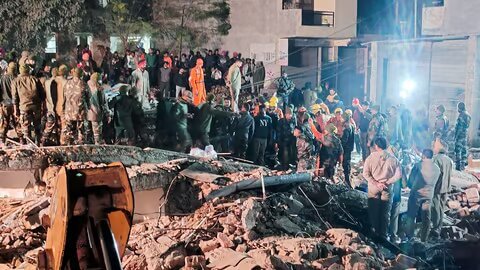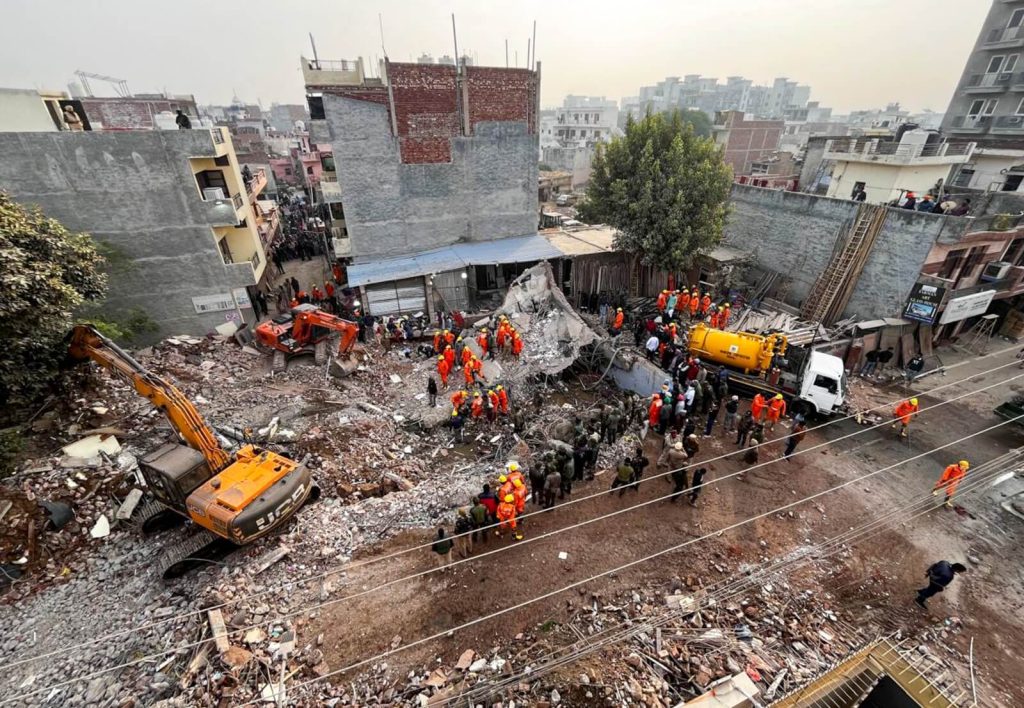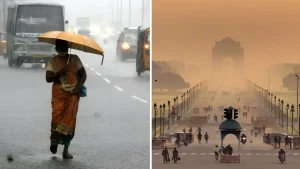Mohali Building Collapse: 5 Urgent Updates as Toll Rises to 2 and Rescue Efforts Intensify

Table of Contents

A tragic incident unfolded in Mohali, Punjab, as a building collapse claimed two lives, with several others feared trapped under the debris. The collapse has sent shockwaves through the community, highlighting pressing concerns about construction standards and emergency response protocols.
This blog provides an in-depth account of the ongoing rescue efforts, updates on the situation, and broader implications for urban safety and accountability.
1. The Incident: What Happened In Mohali, Punjab?
On a routine day in Mohali, tragedy struck when a multi-story building collapsed unexpectedly. The incident occurred in the Kharar area, known for its bustling commercial and residential activity. The building, which was under construction, crumbled around noon, trapping workers and passersby under the rubble.
Immediate Impact:
- Casualties: The toll has risen to two confirmed fatalities, while several others remain unaccounted for.
- Injuries: Rescue teams have pulled out multiple injured individuals, some of whom are in critical condition.
- Trapped Victims: Officials estimate that around 10-15 people could still be trapped beneath the debris.
Eyewitnesses reported hearing a loud crash followed by a cloud of dust engulfing the area. Panic ensued as onlookers rushed to assist while awaiting emergency services.
2. Rescue Operations: Racing Against Time
Rescue efforts are in full swing as teams from the National Disaster Response Force (NDRF), State Disaster Response Force (SDRF), and local authorities work tirelessly to save lives. Equipped with cranes, excavators, and thermal imaging devices, rescuers are meticulously combing through the rubble.
Key Challenges:
- Debris Management: The sheer volume of concrete and steel poses significant hurdles to swift rescue operations.
- Safety Risks: The unstable structure and the risk of further collapses complicate the efforts.
- Time Sensitivity: With every passing hour, the chances of survival for those trapped decrease, making this a race against time.
Mohali Local residents and volunteers have joined the rescue efforts, providing moral support and logistical assistance. Their determination underscores the community’s resilience in the face of adversity.
3. The Human Cost: Stories from the Ground
Amid the chaos, stories of heroism and tragedy emerge, painting a poignant picture of the human cost of the disaster.
Survivor Accounts:
One survivor, a construction worker who managed to escape just moments before the collapse, recounted the harrowing experience:
“I heard a cracking sound and ran as fast as I could. When I turned back, the entire building was collapsing like a deck of cards.”
Families in Agony:
Outside the site, anxious family members await news of their loved ones. Their faces reflect the anguish and helplessness of not knowing the fate of those trapped.
4. Questions of Accountability: Who Is Responsible?
As rescue operations continue, attention turns to the causes of the collapse and the accountability of those involved. Preliminary investigations suggest possible lapses in construction standards and regulatory oversight.
Potential Causes:
- Substandard Materials: Reports indicate that the use of inferior-quality construction materials may have weakened the structure.
- Negligence in Safety Protocols: Overloading of the building or ignoring structural warnings could have contributed to the disaster.
- Regulatory Failures: The role of local authorities in approving the construction plans is under scrutiny.
Authorities have promised a thorough investigation, with legal action against those found guilty of negligence. The incident raises urgent questions about the need for stricter enforcement of building codes and safety norms.
5. Broader Implications: Ensuring Urban Safety
The Mohali building collapse is not an isolated incident but part of a troubling pattern seen in urban areas across India. Rapid urbanization, coupled with lax enforcement of safety regulations, has led to an increase in such tragedies.
Key Lessons:
- Stricter Regulations: Authorities must ensure rigorous compliance with construction and safety standards.
- Transparent Approvals: A more transparent process for granting building permits can reduce the risk of oversight.
- Regular Inspections: Periodic inspections of under-construction and completed buildings can identify potential hazards early.
- Public Awareness: Educating citizens about their rights and safety concerns can empower them to demand accountability.
6. Community Support and Solidarity
In the wake of the disaster, the community has come together to support the victims and their families. Relief efforts include:
- Food and Shelter: Local NGOs and residents are providing food and temporary shelter to those affected.
- Medical Assistance: Hospitals in the area are on high alert, treating the injured and offering psychological support to survivors.
- Donations: A fund has been set up to assist the families of the deceased and injured.
The resilience and solidarity displayed by the community serve as a beacon of hope amidst the tragedy.
Conclusion: A Call for Action
The Mohali building collapse is a stark reminder of the fragility of human life and the importance of accountability in urban development. While rescue teams continue their heroic efforts to save lives, the incident underscores the urgent need for systemic changes to prevent such disasters in the future.
As we mourn the loss of lives and extend our prayers to the affected families, let this tragedy be a turning point in how we approach construction safety and urban planning. The time for complacency is over—ensuring the safety and well-being of citizens must be a collective priority.

For more interesting stories: Tragedy in Jaipur: 5 Heart-Wrenching Facts About the Recent Fire | Mohali Building Collapse: 5 Urgent Updates as Toll Rises to 2 and Rescue Efforts Intensify






